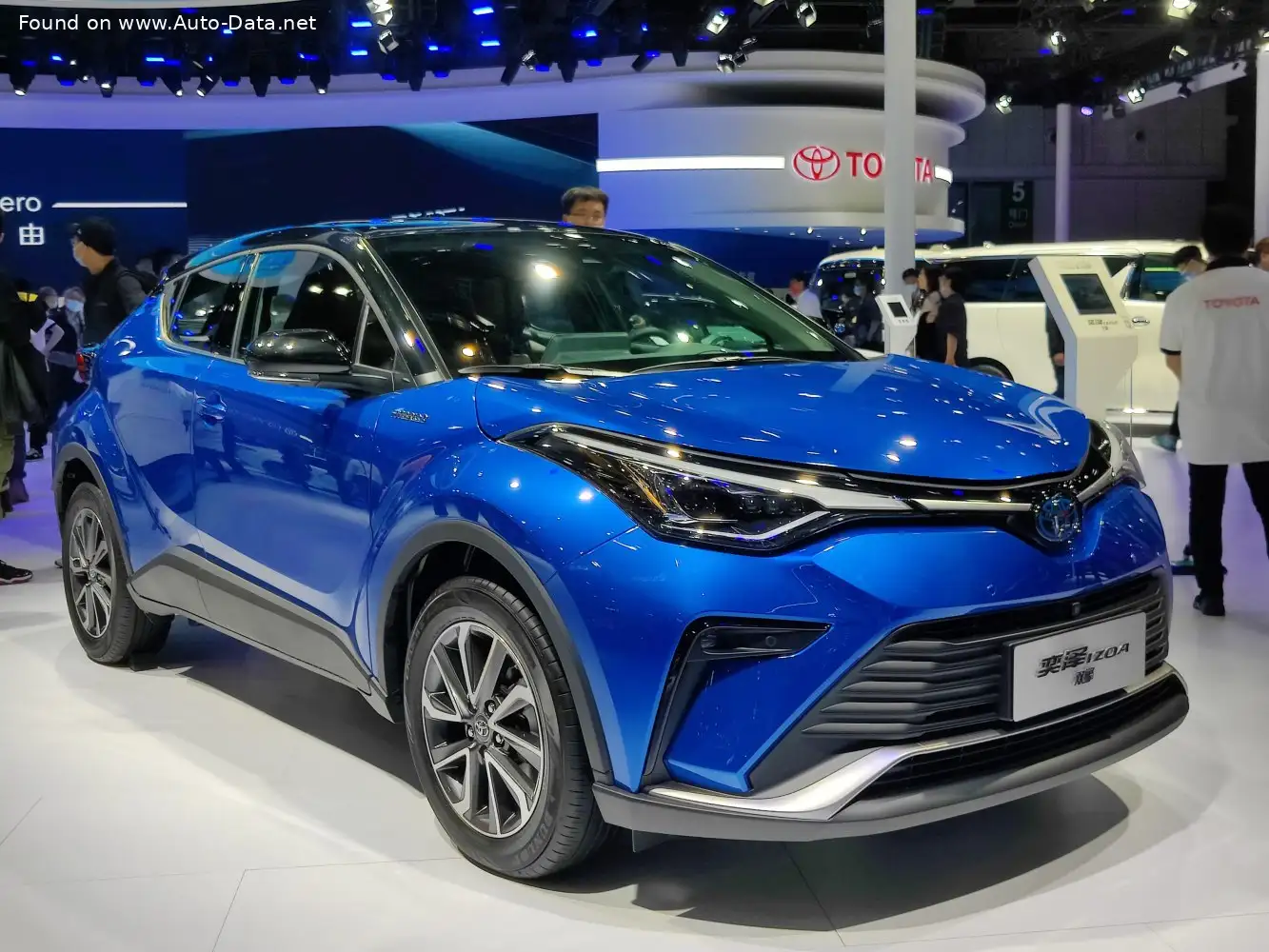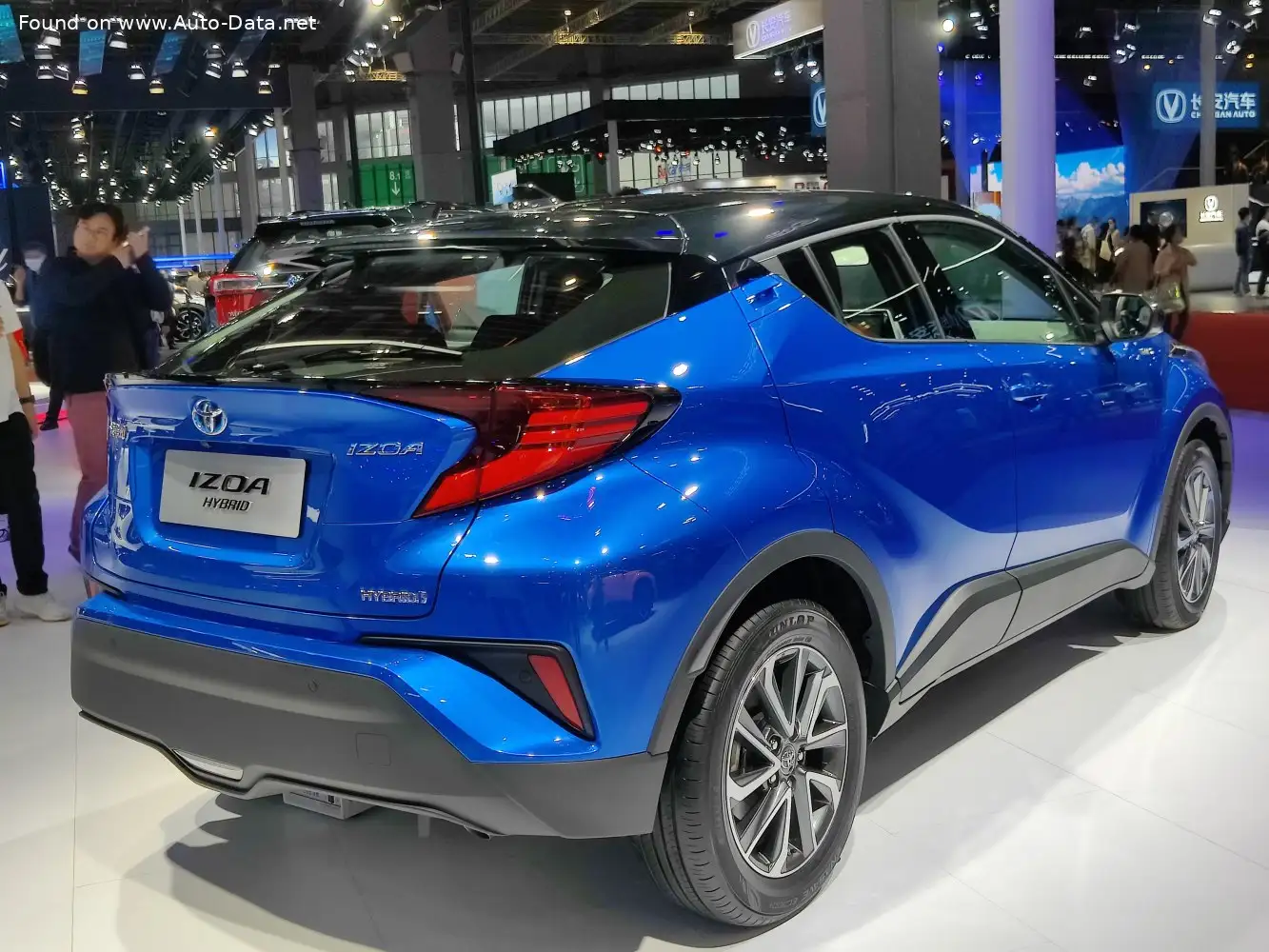Review: 2020 Toyota Izoa (facelift 2020) 2.0 (184 Hp) Hybrid e-CVT
A comprehensive review of the 2020 Toyota Izoa Hybrid, exploring its features, performance, and suitability for various lifestyles.

The 2020 Toyota Izoa Hybrid is a modern SUV that combines style, efficiency, and practicality. As a full hybrid electric vehicle (FHEV), it offers a blend of petrol and electric power, making it an attractive option for those looking to reduce their carbon footprint without sacrificing performance. In this review, we'll explore the Izoa's key features, performance metrics, and its suitability for different driving needs.
Understanding Hybrid Technology
Before diving into the specifics of the Toyota Izoa, let's clarify what a hybrid vehicle is. A hybrid car uses more than one form of onboard energy to achieve propulsion. In the case of the Izoa, it combines a petrol engine with an electric motor. This setup allows the vehicle to switch between or combine power sources to optimize fuel efficiency and reduce emissions.
The Izoa's hybrid system includes a 2.0-liter petrol engine paired with an electric motor, delivering a combined power output of 184 horsepower. The electric motor is powered by a nickel-metal hydride (NiMH) battery, which is recharged through regenerative braking and the engine itself.
Performance and Efficiency
The Toyota Izoa is designed to offer a balanced driving experience. It accelerates from 0 to 100 km/h (0 to 62 mph) in 10.1 seconds, which is respectable for an SUV of its class. The maximum speed is 175 km/h (108.74 mph), making it suitable for highway driving.
One of the standout features of the Izoa is its fuel efficiency. With a combined fuel consumption of 4.5 liters per 100 kilometers (approximately 52.27 US mpg or 62.77 UK mpg), it is an economical choice for daily commuting and long-distance travel. The vehicle meets the China VI emission standard, highlighting its commitment to environmental sustainability.
Space and Practicality
The Izoa is a compact SUV with a body length of 4390 mm (172.83 in.), making it easy to maneuver in urban environments. It offers seating for five passengers and a trunk space of 289 liters (10.21 cu. ft.), which is adequate for everyday use. The kerb weight ranges from 1570 to 1575 kg (3461.26 - 3472.28 lbs.), contributing to its stable handling.
With a ground clearance of 149 mm (5.87 in.) and a turning circle of 10.4 meters (34.12 ft.), the Izoa is well-suited for city driving, where tight parking spaces and narrow streets are common.
Suitability for Different Lifestyles
The Toyota Izoa is versatile, catering to various lifestyles:
- City Driving: Its compact size and efficient fuel consumption make it ideal for urban dwellers.
- Long-Distance Travel: The hybrid system ensures lower fuel costs on road trips, though trunk space may be limited for extensive luggage.
- Family Use: While it seats five, the trunk space might be a constraint for larger families with significant cargo needs.
- Single Ownership: Perfect for singles or couples who value efficiency and style.
- Adventure Lifestyles: While not an off-road vehicle, its SUV build can handle light trails and weekend getaways.
Strengths and Weaknesses
Here's a quick look at the strengths and weaknesses of the 2020 Toyota Izoa:
- Strengths:
- Excellent fuel efficiency
- Environmentally friendly with low emissions
- Compact and easy to maneuver
- Weaknesses:
- Limited trunk space
- Not suitable for heavy off-road use
Conclusion
The 2020 Toyota Izoa Hybrid is a well-rounded SUV that excels in fuel efficiency and urban practicality. It's a great choice for those who prioritize eco-friendliness and cost-effective driving. However, if you require extensive cargo space or plan to tackle rugged terrains, you might need to consider other options. Think about what features matter most to you. Do you need extra cargo space, or is fuel efficiency your top priority?
Specifications Table
| Attribute | Details |
|---|---|
| Generation | Izoa (facelift 2020) |
| Modification (Engine) | 2.0 (184 Hp) Hybrid e-CVT |
| Powertrain Architecture | FHEV (Full Hybrid Electric Vehicle) |
| Body Type | SUV |
| Seats | 5 |
| Doors | 5 |
| Combined Fuel Consumption | 4.5 l/100 km |
| CO2 Emissions | Not specified |
| Fuel Type | Petrol (Gasoline) |
| Acceleration (0-100 km/h) | 10.1 sec |
| Maximum Speed | 175 km/h |
| Emission Standard | China VI |
| Battery Voltage | Not specified |
| Battery Technology | Nickel-metal hydride (NiMH) |
| Electric Motor Power | Not specified |
| Electric Motor Torque | Not specified |
| Engine Displacement | 1987 cm3 |
| Number of Cylinders | 4 |
| Engine Configuration | Inline |
| Power Output | 145 Hp @ 6000 rpm |
| Torque | 188 Nm @ 4400-5200 rpm |
| Kerb Weight | 1570-1575 kg |
| Max Load | 435-440 kg |
| Trunk Space (Minimum) | 289 l |
| Fuel Tank Capacity | 43 l |
| Length | 4390 mm |
| Width | 1795 mm |
| Height | 1565 mm |
| Wheelbase | 2640 mm |
| Drive Wheel System | Front wheel drive |
| Number of Gears (Transmission Type) | Automatic transmission E-CVT |
| Front Suspension | Independent type McPherson |
| Rear Suspension | Double wishbone |
| Front Brakes | Ventilated discs |
| Rear Brakes | Disc |
| Assisting Systems | ABS (Anti-lock braking system) |
| Power Steering | Electric Steering |
| Tire Size | 215/60 R17 |
| Wheel Rims Size | 17 |




 CarChooser
CarChooser